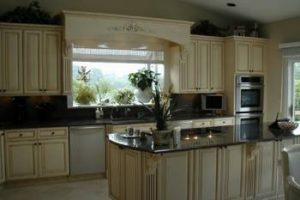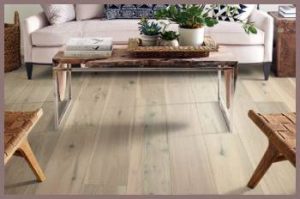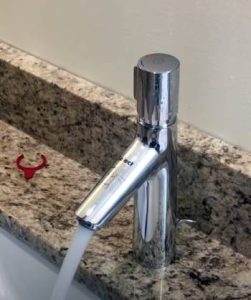If you’re planning a kitchen renovation or just eager to update your cabinets, you’re probably mulling over various options. Two names that frequently pop up in such deliberations are Form Kitchens and IKEA.
This comprehensive analysis of Form Kitchens vs. IKEA Cabinets will help you make an informed decision.
A Brief Comparison Table
| Feature | Form Kitchens | IKEA Cabinets |
| Business Model | Direct-to-Consumer | Retailer |
| Quality of Material | High-grade durable materials | MDF or particle board (lower quality) |
| Design Service | Personalized with professional help | Self-service with online planning tool |
| Assembly | Professional installation | Do-It-Yourself (DIY) |
| Customizability | High (many options) | Medium (limited by preset modular units) |
| Pricing | Mid-to-High (greater value) | Low-to-Mid (cheaper) |
What’s All The Buzz About Form Kitchens?
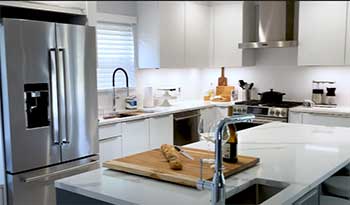
Form Kitchens, relatively new entrants in the kitchen cabinetry space, have garnered considerable attention.
They bring an intriguing promise: the luxury and customization of high-end, design-led kitchens without the high-end price.
But how do they manage that?
Form Kitchens adopt a Direct-to-Consumer (DTC) model, eliminating the middlemen often involved in traditional kitchen renovation. This approach results in significant cost savings.
But more than just affordability, Form Kitchens emphasizes quality, durability, and customization. Their cabinets are made from top-notch materials, built to last, and available in an impressive range of styles and finishes.
Not to mention, Form Kitchens is serious about design. Each customer gets paired with a professional kitchen designer to help them create a layout and look tailored to their space and style.
IKEA Cabinets: A Household Name
On the other hand, IKEA is a household name, synonymous with affordability and DIY assembly. IKEA cabinets are a popular choice for homeowners seeking a budget-friendly kitchen revamp.
They’re loved for their modular nature, allowing for significant flexibility in design and layout.
IKEA cabinets are known for their durability. They’re made from MDF or particle board and coated with melamine, thermofoil, or lacquer. They offer a vast selection of styles and colors to choose from, catering to every taste and budget.
However, the true charm of IKEA lies in their flat-pack approach. This DIY-friendly model is perfect for hands-on homeowners eager to put together their kitchen themselves. The IKEA Kitchen Planner Tool also helps in customizing your design.
Differences Between Form Kitchens And IKEA Cabinets
- Quality & Durability
Form Kitchens and IKEA cabinets both promise durable, high-quality products. But Form Kitchens has the edge here.
Their cabinet bodies are made of stronger, longer-lasting material, ensuring more durability than IKEA’s particle board and MDF construction.
- Design & Customization
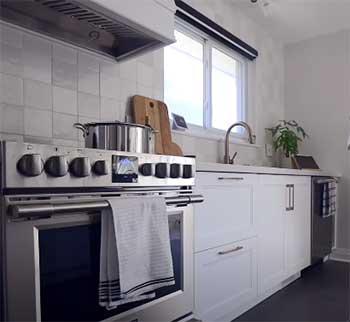
When it comes to design and customization, both brands offer a wide variety. IKEA cabinets provide numerous options in terms of size, color, and style.
But Form Kitchens’ collaboration with a personal designer for each client gives it a unique advantage, resulting in a highly customized, personal design.
- Pricing & Value for Money
IKEA cabinets are known for their affordability. But are IKEA kitchens cheaper than custom ones? Generally, yes.
However, with Form Kitchens’ DTC model, you get the feel of a custom kitchen without the custom kitchen price.
It may still be more expensive than IKEA, but the value-for-money ratio is quite attractive.
Key Features of Form Kitchens
- Direct-to-Consumer Model
The most distinguishing feature of Form Kitchens is their DTC model, which removes middlemen, reducing costs and ensuring transparency.
- High-Quality Materials
Form Kitchens uses high-grade materials for their cabinets, promising robustness and longevity.
- Personalized Design
Each Form Kitchens customer gets paired with a professional designer, ensuring a kitchen layout that perfectly suits their needs and preferences.
- Wide Range of Styles and Finishes
Form Kitchens offers an impressive array of styles and finishes, enabling customers to personalize their kitchen to their liking.
Key Features of IKEA Cabinets
- Budget-Friendly
IKEA is known for its affordability, offering a wide range of options that cater to varying budgets.
- DIY Assembly
The flat-pack design of IKEA cabinets allows for self-assembly, appealing to the DIY spirit of many homeowners.
- Flexible Design
The modular nature of IKEA cabinets permits significant flexibility in kitchen design and layout.
- Variety of Materials and Finishes
IKEA uses MDF or particle board for their cabinets and provides multiple finish options, including melamine, thermofoil, or lacquer.
Also Read: Why People Love St Martin Cabinet?
Frequently Asked Questions (FAQ)
The main downside of IKEA cabinets is the material used in their construction – particle board and MDF are not as durable as solid wood. They can be prone to damage in high-humidity environments. Additionally, assembly can be time-consuming and challenging for those not handy with tools.
Form Kitchens competitors include other DTC kitchen cabinet brands like CliqStudios and RTA Cabinet Store, as well as traditional high-end brands like Poggenpohl and Snaidero.
Yes, IKEA kitchens are generally cheaper than custom kitchens. However, it’s worth considering semi-custom options like Form Kitchens that offer higher quality and greater personalization at a competitive price.
IKEA cabinets are cheaper because of their manufacturing process and business model. They use less expensive materials like particle board and MDF, produce in bulk, and use a flat-pack model that reduces shipping and storage costs. The customer-assembler approach also cuts down on labor costs.
Wrapping Up
In the Form Kitchens and IKEA Cabinets battle, there’s no definitive winner. Both brands cater to different needs and preferences. If budget is your primary concern, IKEA cabinets could be the perfect choice.
However, if you’re after more customization, and professional design guidance, and don’t mind spending a bit more, Form Kitchens might be the right pick for you.
Remember, the best kitchen is one that works for your needs, fits within your budget, and reflects your style.

